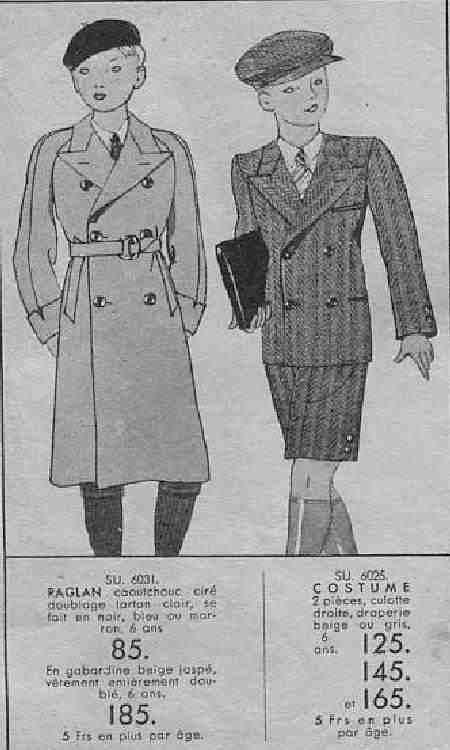
Figure 1.--The Trois Quartiers department store in October 1933 offered Raglan double overcoats beginning in sizes for boys 6 years old. Note that the model is shown wearing a béret.


Figure 1.--The Trois Quartiers department store in October 1933 offered Raglan double overcoats beginning in sizes for boys 6 years old. Note that the model is shown wearing a béret. |
The Aux Trois Quartiers department store in Paris offered two styles of overcoats in a October 1933 advertisement. One was an English styled Raglan overcoat. The other was a serge overcoat. Both were double breasted styles and avialable for boys beginning at age 6 years. The store does not tell us what the upper range was, but they appaar to be a style suitable for much older boys. Pricing depends on the size of the coat.
The first overcoat was a very English-looking Raglan garment in a double breasted style and a matching belt. There appear tobe twomside pockets and cuffs. The ad copy reads, "SU. 6031. Raglan caoutchouc ciré doubbiage tartan clair, se fait en noir, bleu ou maron, 6 ans Fr 85. En gabardine beige, jaspé, vétement entièrement doublé, 6 ans. Fr 185. 5 Francs en plus par àge." This would translate something like, "Raglan rubber waxed, lining in light-colored tartan, available in black, blue or maroon, size age 6, Fr 85. In gabardine beige, marbled ("jaspé" originates from "jaspe" a stone with stripes of different colours), garment entirely doubled, 6 years. Fr 185. Larger sizes 5 Francs addition for every year of age." The Raglan overcoat is an English style named after Field Marsal Lord Raglan (1788-1855). The ribberizing made it a handy garment for a rainy day. Note how much morecexpensive the gaberdine versions were.
The serge overcoat was more of a cold weather garment than a raincoat. The ad copy reads, "Su. 6028. Pardessus manches montées martingale forme mode, doublage mi-corps en draperie beige ou gris, 6 ans. Fr 145 et 175. 5 Frs en plus por àge." This would translate something like, "Overcoat [assembled sleeves?] [martingale?] style, lining half-length in beige or gray drapery, 6 years. Fr 145 and 175. 5 Frs addition for each year of age." The material specified is "draperie", also called "drap". This translates as drapery which in English is a fabric which is arranged in graceful folds, such as curtain fabric. A French reader tells HBC that "draperie" as used here is a non-descript serge, a heavy wool fabric. A French reader tells HBC that "Manches montées martingale forme mode" means, "At the waist there was a half belt with 1 button and the cup was to day fashion. We say 'forme mode'." HBC does not yet understand what this means. Note that the model shown wearing this coat is wearing knickers rather than the short pants the model wearing the Raglan overcaot is pictured wearing. The model is show wearing a flat cap, a very fashionable style in the 1920s and early 30s. The cit of the garment is rather like the Raglan overcoat witj large lapels and sleeve cuffs. There is, however, no belt.
Note how the garments are priced by the age of the child with the larger sizes requiring more fabric, slightly more expensive. This is coomon in French clothing ads through the 1930s. Clothes are no longer priced like this. HBC believes that this is in part a reflection that in the fabric was once a much more important component of production costs than today when the labor and marketing costs involved are the major cost, except for especially luxurious fabrics.
Note the one model wearing a béret. This suggests that bérets in 1933 could still be worn by fashionally dressed boys. By the 1940s this was no longer seen in French clothing ads as the béret had come to be seen as old fashioned and unstylish.
HBC makes every effort to translate the French ad cpy as it often includes interesting details about the garments. We here at HBC do not speak French, but we know many French terms. Our French readers assistvas best they can. The ad copy because they often use dated or trade words are not easy to translate. We encourage readers to comment on the translations if they have any insights or comments.
A martingale was an ornamental belt at the bck of boys' and men's overcoats. A French reader reports, "Ce qui signifie qu'aux poignets il y avait une martingale qui s'attachait par un bouton . Cette coupe ètait à la mode cette année-là." This would translate as something like, "This means that at the back waistline there was a "martingale" (ornametal back belt) attached by buttons. This style was very popular in 1933." As the illustrations are front view, the martingales are not shown here. The word has also been incorporated into the English language. The primary definitioin is a piece of equestrian tackle, part of the harness. Thus it is related to some extent as the French term is a belt. Interestingly, the first known English use of the word was in the late 16th century when it described a type of hosiery thatfastened at the back. The term ledgedly was based on "martega", an inhabitant of "Martigue"--a town in southeast France.
Navigate the Boys' Historical Clothing catalog/magazine pages:
[Return to the Main French mail order 1933 page]
[Return to the Main French mail order 1930s page]
[Main photo/publishing page]
[Store catalogs]
[Fashion magazines]
Navigate the Boys' Historical Clothing Web Site:
[Introduction]
[Activities]
[Bibliographies]
[Biographies]
[Chronology]
[Clothing styles]
[Countries]
[Contributions]
[FAQs]
[French glossary]
[Boys' Clothing Home]
Navigate the Boys' Historical Clothing Web Site:
[Sailor suits]
[Sailor hats]
[Berets]
[Flat caps]
[Suits]
[Coats]
[Kneesocks]
[Double-breasted styling]
